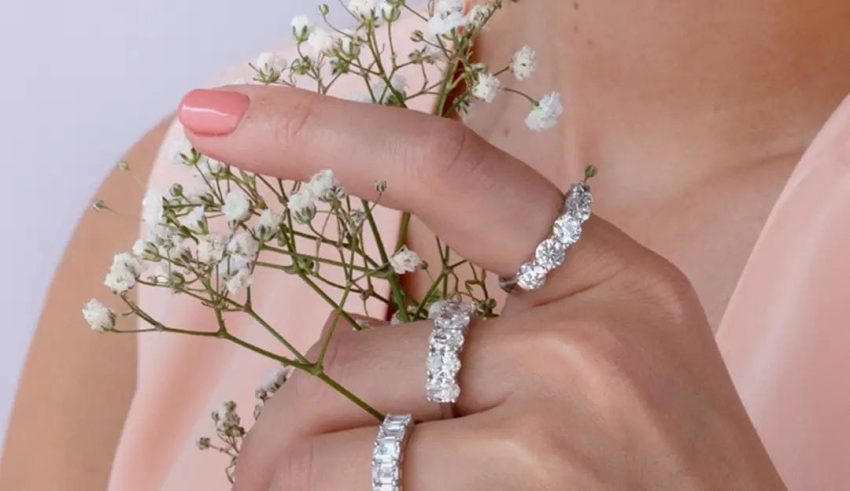
Diamonds vs Natural Diamonds: What You Need to Know
Introduction: Understanding the Differences
Diamonds have long been seen as the pinnacle of luxury and love. Whether it’s for an engagement ring or a piece of timeless jewelry, the diamond has earned its place in our hearts and minds. But lately, there’s been a new contender making waves in the jewelry industry: lab-grown diamonds. These synthetic gems are often seen as a more ethical, affordable alternative to traditional mined diamonds. But do they live up to the same level of beauty and value?
In this guide, we’ll take a deep dive into the comparison between lab grown diamond vs real diamond, covering everything from their formation processes to their impact on the environment. By the end, you’ll have all the information you need to make an informed decision about which diamond is right for you.
What is a Lab-Grown Diamond?
A lab-grown diamond is exactly what it sounds like: a diamond that’s created in a controlled laboratory setting rather than being mined from the earth. Lab-grown diamonds are made using two primary methods: High Pressure High Temperature (HPHT) and Chemical Vapor Deposition (CVD). Both methods mimic the extreme heat and pressure that naturally occur deep within the Earth’s crust to grow real diamonds.
What is a Real Diamond?
A real diamond (also called a natural diamond) is a gemstone that forms naturally under intense pressure and heat beneath the Earth’s surface. Over millions of years, carbon atoms bond to form a crystal structure that eventually turns into the diamonds we cherish. Real diamonds are rare, valuable, and have been mined from the earth for centuries.
The Formation Process: Natural vs Lab-Grown
The formation process is one of the most significant differences between lab-grown and natural diamonds.
How Are Lab-Grown Diamonds Made?
Lab-grown diamonds are made through either the HPHT or CVD method. HPHT involves mimicking the Earth’s natural conditions applying high pressure and temperature to carbon. CVD, on the other hand, involves using gases that contain carbon, which are then broken down to form diamond crystals. Both methods create diamonds that are virtually identical to natural diamonds in terms of chemical composition, crystal structure, and physical properties.
How Are Real Diamonds Formed?
Real diamonds form naturally in the Earth’s mantle over millions of years, under conditions of extreme pressure and temperature. The carbon atoms crystallize into a diamond structure, which then rises closer to the Earth’s surface through volcanic eruptions or other geological processes.
The Extreme Conditions of Natural Diamond Formation
Natural diamonds are formed at depths of about 90-120 miles beneath the Earth’s surface, where temperatures can exceed 2,000 degrees Fahrenheit. This intense pressure and heat give diamonds their unparalleled hardness and unique qualities.
Comparing the Two: Similarities and Differences
While both diamonds are chemically and structurally identical, the main difference lies in how they are formed. Lab-grown diamonds are created in a fraction of the time, but their appearance, durability, and sparkle are indistinguishable from real diamonds. However, some people may feel that a natural diamond holds more sentimental or cultural value due to its rarity and the millions of years it takes to form.
The 4 Cs: Quality and Value Comparison
When evaluating diamonds, both lab-grown and natural, there are four key characteristics to consider: cut, clarity, color, and carat weight—commonly known as the 4 Cs.
Cut
The cut of a diamond refers to how well the diamond has been shaped and faceted. The better the cut, the more the diamond will sparkle. Both lab-grown and natural diamonds can have excellent cuts, though the consistency of lab-grown diamonds might be higher since they’re created in a controlled environment.
Clarity
Clarity measures how free a diamond is from internal or external imperfections, called inclusions and blemishes. Both natural and lab-grown diamonds can have varying levels of clarity, but lab-grown diamonds are often flawless or have fewer imperfections, thanks to their controlled growth process.
Color
Diamonds come in a variety of colors, ranging from colorless to shades of yellow and brown. Both lab-grown and natural diamonds can have a wide range of color grades, but lab-grown diamonds are often perceived to have a more consistent, higher-quality color.
Carat Weight
Carat weight refers to the size of the diamond. Both lab-grown and natural diamonds are available in various carat weights, and the price tends to increase with size. However, since lab-grown diamonds are generally more affordable, you might be able to purchase a larger diamond for the same price as a smaller natural diamond.
Ethical and Environmental Impact
One of the most talked-about differences between lab grown diamonds and real diamonds is their ethical and environmental impact.
The Environmental Cost of Mining Real Diamonds
Mining real diamonds comes with significant environmental costs. Diamond mining can cause deforestation, habitat destruction, and contamination of surrounding water supplies. The process also consumes large amounts of energy and water. In some cases, mining operations can even harm local communities and workers, particularly in regions with weak labor laws.
Sustainability of Lab-Grown Diamonds
In contrast, lab-grown diamonds are more eco-friendly. Since they don’t require mining, they help reduce environmental damage. The energy consumption for creating lab-grown diamonds varies depending on the production method, but many lab-grown diamond companies are working to use renewable energy sources in their processes.
Labor Practices in Diamond Mining
Another key concern for some consumers is the labor practices involved in diamond mining, especially in areas where child labor and exploitation are prevalent. Lab-grown diamonds eliminate this concern entirely, as they are created in a controlled and ethical environment.
Price Comparison: Lab-Grown vs Real Diamonds
One of the most significant factors for consumers is the price difference between lab-grown diamonds and natural diamonds.
Cost of Lab-Grown Diamonds
Lab-grown diamonds are significantly cheaper than their natural counterparts, often 20-40%. The cost savings come from the fact that lab-grown diamonds are created much faster and don’t involve the high costs associated with diamond mining.
Price of Real Diamonds
Natural diamonds, on the other hand, are expensive due to their rarity and the costs associated with mining. The price is also affected factors such as size, quality, and market demand. The rarity of natural diamonds makes them highly sought after, which drives up their value.
The Economic Advantage of Lab-Grown Diamonds
If you’re looking for a more affordable option that still offers the beauty and brilliance of a traditional diamond, lab-grown diamonds provide excellent value for money. You can often purchase a larger or higher-quality diamond for the same price as a smaller or lower-quality natural diamond.
Durability and Longevity
Both lab-grown diamonds and real diamonds are incredibly durable and long-lasting.
Hardness: Lab-Grown vs Real Diamonds
Diamonds are the hardest natural material on Earth, scoring a 10 on the Mohs hardness scale. This means both lab-grown and real diamonds are highly resistant to scratches and damage. They are incredibly durable, making them an ideal choice for everyday wear.
How Lab-Grown Diamonds Stack Up Over Time
Lab-grown diamonds are just as durable and long-lasting as natural diamonds. They will not lose their sparkle or degrade over time. With proper care, both types of diamonds can last forever.
Appearance: Do Lab-Grown Diamonds Look Like Real Diamonds?
Lab-grown diamonds have the same brilliance, sparkle, and visual appeal as natural diamonds. The only way to tell the difference is through specialized equipment used gemologists.
Brilliance and Sparkle Comparison
Both lab-grown and real diamonds sparkle brilliantly under light. Lab-grown diamonds can often have a bit more sparkle due to their precise cutting process, but to the naked eye, the difference is negligible.
Identifying the Differences with the Naked Eye
It is nearly impossible for the average person to distinguish between a lab-grown diamond and a real diamond without professional tools. Both types are indistinguishable in terms of appearance.
Resale Value and Investment
When it comes to resale value, natural diamonds typically hold their value better than lab-grown diamonds.
Do Lab-Grown Diamonds Hold Their Value?
Lab-grown diamonds don’t have the same resale value as natural diamonds. However, their price is more stable, and they offer excellent value at the time of purchase.
Are Real Diamonds a Better Investment?
Real diamonds, especially high-quality ones, tend to hold or increase in value over time. If you’re looking for an investment piece that you can pass down for generations, a natural diamond may be the better choice.
The Changing Market for Lab-Grown Diamonds
While lab-grown diamonds may not have the same resale value, their growing popularity and ethical appeal mean that they’re becoming an increasingly viable option for consumers.
Why Choose a Lab-Grown Diamond?
Lab-grown diamonds are a great option if you’re looking for an affordable, ethical, and sustainable alternative to natural diamonds.
Affordability and Value for Money
Lab-grown diamonds offer similar beauty at a much lower price. You can get a larger or higher-quality diamond for the same budget, making them an excellent choice for those on a budget.
Ethical Considerations
For those concerned about the ethical implications of diamond mining, lab-grown diamonds offer peace of mind, as they don’t involve exploitative practices or environmental damage.
Customization and Variety
Since lab-grown diamonds can be produced in a controlled environment, they are often available in a wider range of cuts, sizes, and qualities, allowing for more customization.
Why Choose a Real Diamond?
Natural diamonds have a timeless appeal and cultural significance that many people find meaningful.
Timeless Appeal and Tradition
For those who value tradition, real diamonds have a unique historical and cultural significance. They’ve been cherished for centuries and are often associated with eternal love and commitment.
Resale Value and Longevity
Natural diamonds tend to have better resale value and are seen as a long-term investment. They also have more lasting significance due to their rarity.
Cultural Significance
Diamonds are considered the ultimate symbol of luxury and prestige, and owning one carries cultural weight.
How to Choose Between Lab-Grown and Real Diamonds
When deciding between a lab-grown or a real diamond, consider factors like budget, personal values, and long-term goals. Both options are beautiful and durable, but your decision will depend on your preferences.
Conclusion: Which Diamond is Right for You?
Choosing between a lab-grown diamond and a real diamond ultimately comes down to your personal preferences, ethical considerations, and budget. Both options offer beauty, durability, and sparkle, but only you can decide which one is the better choice for your lifestyle and values. Whether you go for a lab-grown diamond or a natural one, you’ll be getting a stunning piece that will last for years to come.



